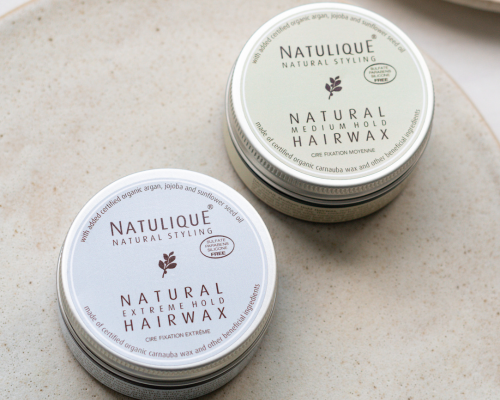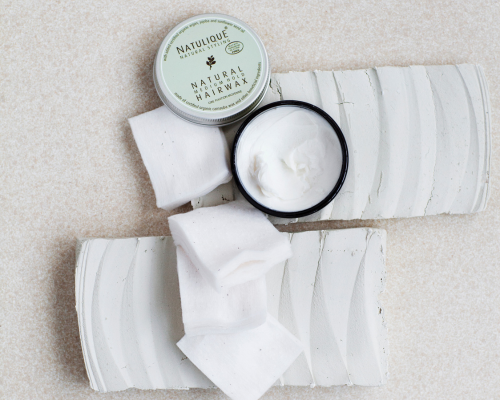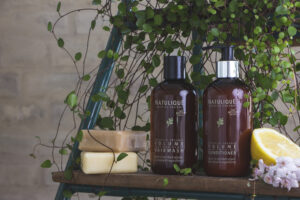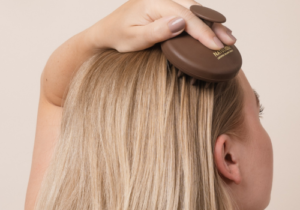Introduction to using wax to texturize hair
The quest for perfectly styled hair is universal, and using wax to texturize hair is a method favored by many styling aficionados. This versatile hair product can transform any type of hair - short or long, thin or thick - into a textured work of art. Let's find out why hair wax is such a hit, and how it can become an indispensable ally in your hair routine.
Why use hair wax?
Advantages of hair wax
- Versatility : The wax can be used on a variety of hair types, creating a multitude of styles, from natural, casual looks to more structured styles.
- Control : It offers optimal control all day long, preventing frizz and flyaways.
- Finish : Depending on the type, the wax can give a matte or shiny appearance, to suit everyone's personal preferences.
- Food : Some waxes contain nourishing ingredients, such as natural oils, which help keep hair healthy.
When to use hair wax?
Hair wax is particularly useful in several situations:
- Short hairstyles : It is ideal for short cuts that require increased definition and sculpting.
- Special occasions : For events requiring perfect styling all day and even at night.
- Humid climates : In periods of high humidity, wax helps maintain the integrity of the style.
What is hair texturization?
Definition of hair texturization
Texturizing hair means adding density and volume while defining strands for a more dynamic, modern look. It's the secret behind those natural-looking but carefully crafted hairstyles often seen on catwalks and among celebrities. Texturization gives the illusion of thicker hair and provides a perfect base for all kinds of updos.
Why texturize your hair?
- Volume : Texturizing hair adds volume to fine, platinum strands, revitalizing a tired look.
- Definition: It adds character to your hairstyle with sharp, well-defined details.
- Style: Texturing allows you to wear many styles with finesse, from chic tousled to super-structured.
- Ease of use : By working with the nature of your hair, it simplifies daily maintenance and reduces the time spent styling.
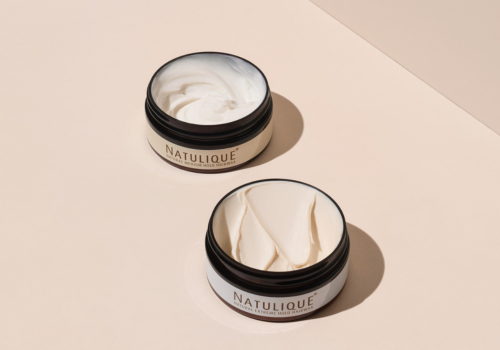
Choosing the right wax for texturizing hair
Types of hair wax
The choice of hair wax is crucial to achieving the desired result when texturizing. Each type of wax has its own characteristics and is suitable for different styles and hair types. Here are a few popular options:
Beeswax-based waxes
- Natural : Rich in natural ingredients, these waxes offer a soft texture while contributing to hair nutrition thanks to their moisturizing properties.
- Strong hold: Beeswax provides long-lasting hold and is ideal for hairstyles requiring solid structuring.
- Gloss finish : It often adds a glossy finish, perfect for styles that call for extra sparkle.
Clay-based wax
- Matifying : Unlike beeswax, clay offers a matte finish, ideal for those who prefer a more natural, discreet look.
- Volume : Clay helps add volume, making it an excellent choice for people with fine or flat hair.
- Texture : It provides a rough texture that is perfect for tousled and structured styles, while allowing for all-day reactivity.
How to choose the right wax for your hair texture?
Choosing the right wax depends not only on its composition, but also on the specific needs of your hair and your desired style. Here are a few tips to help you make the right choice:
Tips for choosing the right wax for your hair type
- Fine hair : Opt for a light clay-based wax that won't weigh down strands and adds volume.
- Thick hair : Beeswax-based waxes are more suitable, as they offer better hold to control unruly strands.
- Curly hair : Choose a moisturizing wax that nourishes curls and prevents frizz. A formula enriched with natural oils can be beneficial.
- Gloss or matte effect: Decide whether you prefer a glossy finish for a polished effect or a matte finish for a more natural look.
Common mistakes to avoid
- Overload : Avoid applying too much product, as this can weigh your hair down and make it greasy.
- Bad compatibility : Always check that the wax you choose matches your hair's natural texture to avoid any inconvenience.
- Incorrect application: The wax needs to be warmed between the hands to distribute properly, a step often neglected and which can make application uneven.
- Ignore ingredients: Always read the ingredients list to avoid potentially irritating harmful chemicals.
By choosing the right wax for your hair and style, you can ensure professional results at home. This not only enhances your style, but also protects your hair's long-term health.
See also: How do you achieve even bleaching all over your hair?
Procedure for applying wax to hair
When should you use wax in your hair routine?
Applying hair wax is an important step in achieving a well-structured hairstyle. Although it may seem simple, timing can make all the difference to the final result.
Waxing wet vs. dry hair
- Wet hair : Applying wax to slightly damp hair is ideal for those who want to create a more flexible, less structured style. This method works well for short to medium-length hair and helps maintain humidity.
- Dry hair : For stronger hold and more defined texture, apply wax to completely dry hair. This method is particularly effective for hairstyles such as pompadours or layered cuts that require precise definition.
Preparing hair before application
Before applying the wax, it's crucial to prepare your hair properly to maximize the wax's effects and avoid greasy or weighed-down strands.
Clean and dry hair
- Cleaning : Make sure your hair is clean by using a mild shampoo to remove any residue from previous products, to ensure even application of the wax.
- Drying : Use a towel to remove excess water if applying to slightly damp hair, or a hairdryer if you prefer application to dry hair. Air-drying is also an option, but may reduce hold.
Detangling hair
- Brushing : Gently comb or brush your hair to remove any tangles and ensure even distribution of the wax.
- Heat preparation : If you use heated tools afterwards, apply a heat protection spray to protect your hair from thermal damage.
Wax application techniques
Correct wax application is essential to achieve the desired look without weighing your hair down.
Quantity of wax to use
- Small quantities : A dab of wax is usually enough. It's better to start with a small amount and add more if necessary, rather than using too much from the outset.
- Heating between the hands : Heat the wax by rubbing your hands together until it becomes homogeneous and easy to apply. This step ensures a more even distribution on the hair.
Application method
- Finger techniques : Distribute the wax throughout your hair using your fingers like a comb, targeting sections needing more hold or texture. For a tousled effect, use your fingers to define the ends and add volume at the base.
- Use of tools : For more precise styles, such as a clean parting or hair pulled back, use a comb after waxing to sculpt and finalize the details of your hairstyle.
By following these steps, waxing can improve the durability and overall look of your hairstyle, while preserving the health of your hair.
Maintain your texturized hair with wax
Take care of your hair after application
Regular cleaning
- Frequent cleaning: After using wax, it's important to wash your hair regularly to remove any residue. This prevents the build-up of products that can weigh hair down and clog follicles.
- Suitable shampoos: Use a clarifying shampoo once or twice a week for deep cleansing. These formulations help remove wax residues without drying out the hair.
Moisturizing and care
- Intensive hydration: Wax can sometimes make hair dry, especially if applied frequently. Apply a moisturizing mask or deep conditioner to nourish your hair after washing.
- Natural oils: Oils such as argan oil or coconut oil can be used to restore shine and softness to your hair after waxing.
FAQ
What type of wax should I use for thick hair?
For thick hair, we recommend using a beeswax-based wax for stronger hold and effective management of unruly strands.
Can hair wax damage my hair?
Yes, if used in excess or without proper cleansing. Be sure to wash your hair regularly and moisturize to minimize potential damage.
Can I use wax every day?
Use sparingly to avoid residue build-up. If necessary, be sure to wash and moisturize your hair between applications.
Is wax suitable for fine hair?
Yes, but choose a light formula, preferably clay-based, to avoid weighing down fine hair while adding volume.
Does hair wax work on curly hair?
Yes, it can add definition to curls while controlling frizz. Opt for a moisturizing wax to keep curls healthy.
Conclusion
Hair wax is a powerful tool for texturizing and styling various hair types, whether short, medium-length or long. Its use can transform a haircut into a work of art, while requiring proper care to maintain hair health. By choosing the right type of wax and following the proper application and care processes, you can achieve impressive hair styles while preserving the integrity of your hair. Moderate, thoughtful use of wax will help you make it an essential part of your hair routine.
